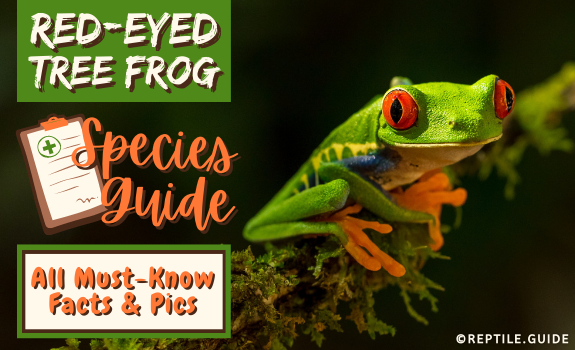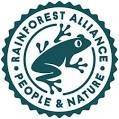The red-eyed tree frog or red-eye tree frog is a popular pet species with plenty of personality. Let’s take a closer look at how they make their owners so hoppy.
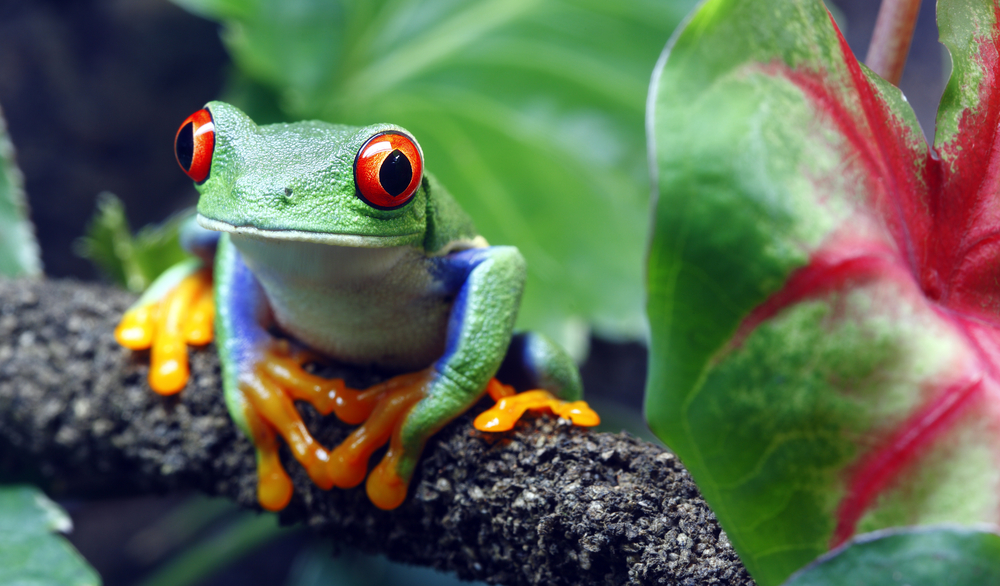
In This Article
Red-Eyed Tree Frog In A Nutshell
This care sheet will answer diverse questions such as:
- What do red-eyed tree frogs eat?
- Are red-eyed tree frogs poisonous?
- Are red-eyed tree frogs good pets?
I’ll also discuss topics relatig to:
- Red-eyed tree frog habitat
- Baby red-eyed tree frog care
- What to feed red-eyed tree frogs
For now, you need to know:
What Do Red-Eyed Tree Frogs Eat
Red-eye tree frogs are carnivorous animals that feed on a wide variety of invertebrates and other small animals.
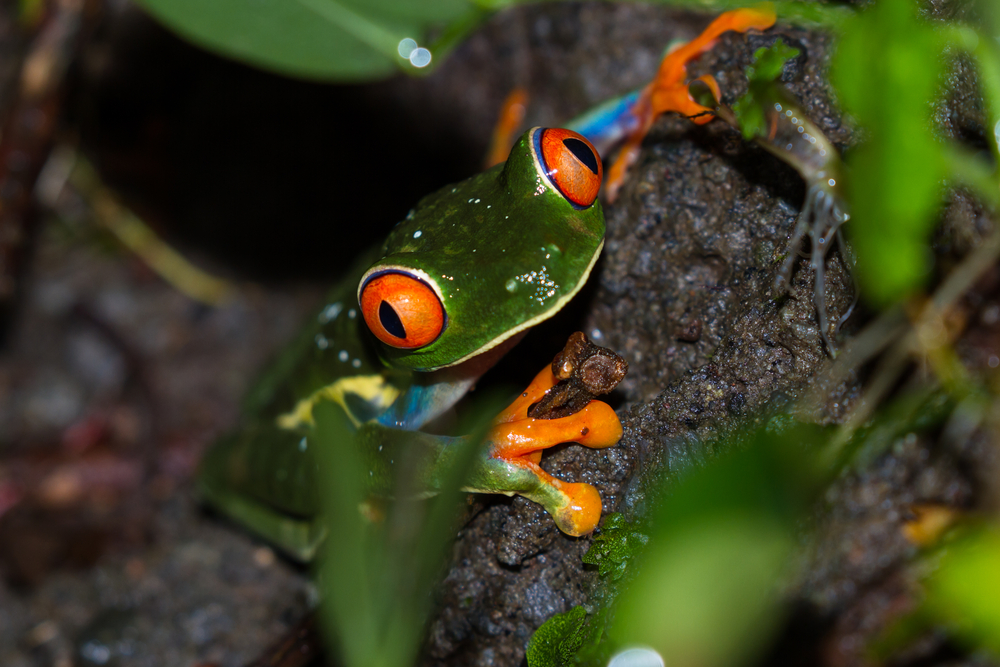
Examples of what these frogs may eat include:
- Ants
- Moths
- Worms
- Crickets
- Smaller frogs
- Slugs and snails
If you’re keeping a red-eyed tree frog as a pet, its diet can include:
- Crickets
- Fruit Flies
- Silkworms
- Mealworms
- Hornworms
- Earthworms
- Cockroaches
Pro Tip: Only feed your frog fatty insects like silkworms and mealworms as a treat, or you might risk your frog becoming obese.
Red-Eyed Tree Frog Habitat
Red-eyed treefrogs have a distribution that ranges from Southern Mexico through Central America and down to the northern tip of South America.
These animals mostly live in Neotropical rainforests. They’re one of the signature species that the Rainforest Alliance uses to advocate the conservation of rainforests.
Red-Eyed Tree Frog Care
Caring for red-eye tree frogs is fairly simple. The following sections will cover everything you need to know about red-eyed green tree frog care.
Housing
Housing these frogs is fairly simple. Since they’re tree-dwelling, they need a vertical terrarium with dimensions of at least 18x18x24 inches.
Ensure that you buy a tank with sufficient ventilation since these frogs require high humidity, but also clean airflow.
Heating and Lighting
These frogs require a day and night cycle.
The easiest way to accomplish this is with a 5.0 UVB light fixture. You can hook it up to a timer set to a 12-hour cycle.
Most frogs require a certain amount of UVB lighting to metabolize Calcium and certain other minerals.
If you’re growing tropical plants in your terrarium, you’ll also need a full-spectrum bulb to keep the plants healthy.
Frogs don’t require a temperature gradient in their enclosures. Aim to provide an ambient temperature of between 75 and 80 degrees Fahrenheit.
This is easily accomplished using an external heat pad and a thermostat.
Substrate and Decor
These animals require a moist substrate like coco peat or sphagnum moss to help maintain adequate humidity levels in their enclosures.
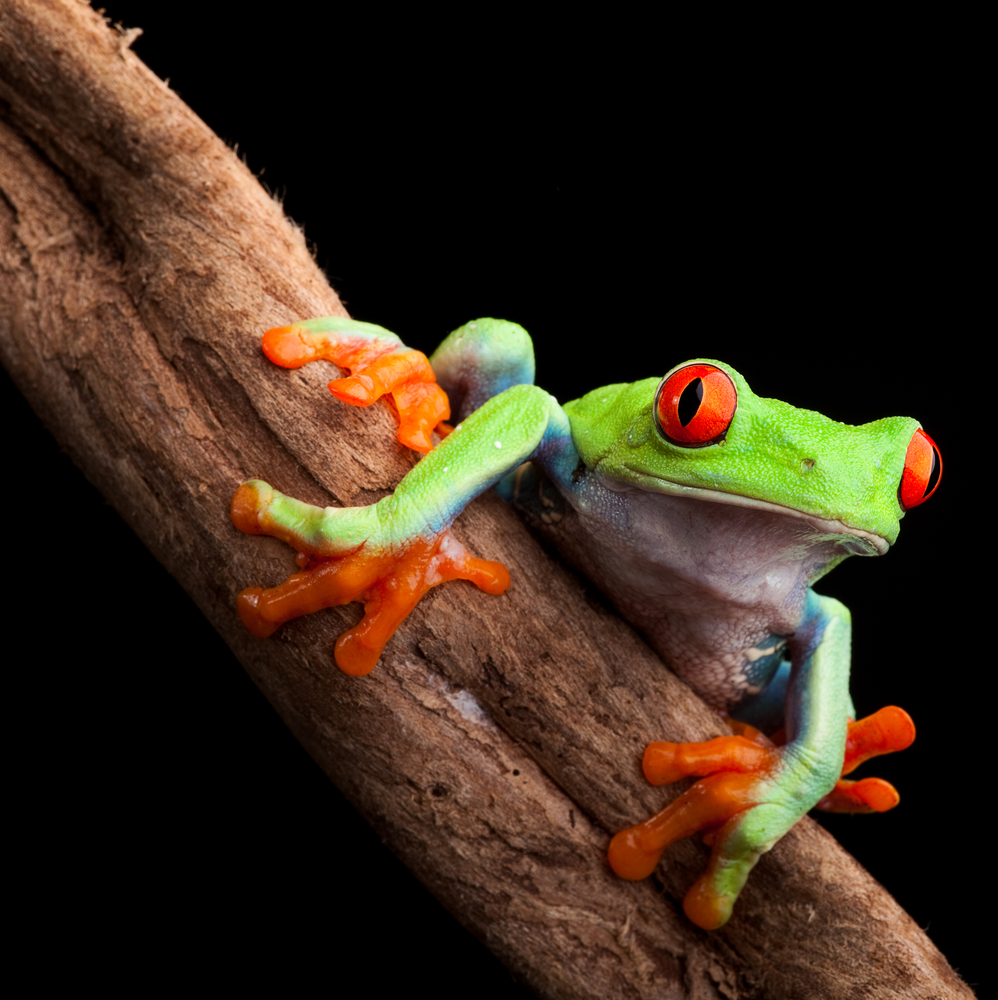
You also need to provide plenty of climbing space like real or fake plants or even thin bamboo stems. As long as they have plenty of things to climb on, they need little other decor.
Caring for a Baby Red-Eyed Tree Frog
When you’re caring for a baby of this species, the main difference is in size. You need to keep them in a small enclosure so they have easy access to their food and water.
Furthermore, you need to provide tiny food sources like pinhead crickets, fruit flies, and other insects of a similar size. Many babies will prefer crickets.
You should provide a shallow water dish so the little fella can’t drown if it falls in.
Are Red-Eyed Tree Frogs Good Pets?
As long as you’re not looking for a cuddly animal like a dog or a rat, red-eyed tree frogs make excellent pets. They’re display animals more than anything else, and they can be finicky.
But, if you’re willing to put in the time and effort to keep them healthy, these bright green frogs from Central America will bring beauty to your life.
Are Red-Eyed Tree Frogs Easy To Take Care Of?
As with most animals, the red-eyed tree frog has some specific needs; when these needs are met, they’re very easy to care for.
As long as you keep the temperature and humidity levels in their preferred range, and provide a varied diet, these animals are easy to care for.
Are Red-Eyed Tree Frogs Loud?
While the red-eyed tree frog isn’t a living boombox like some species, their call isn’t quiet.
If you have someone in the house that doesn’t like frog calls, they’ll probably consider this species too loud. However, for frog lovers, the sound can be quite enjoyable.
Fortunately, these frogs mainly call during the rainy season when they’re trying to attract a mate. They won’t call all year round.
Are Red-Eyed Tree Frogs Poisonous?
These frogs aren’t poisonous. Rather than having actual poison, these animals use bright red startle coloration to frighten any predator into thinking they’re poisonous.
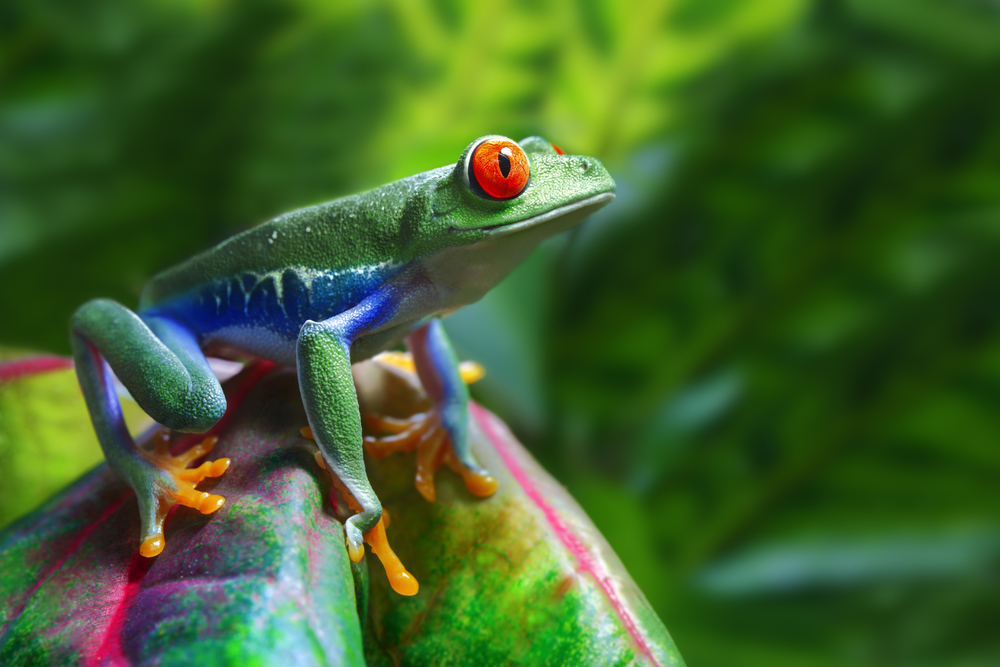
Like virtually all amphibians, their skin contains certain toxins that create unpleasant symptoms when ingested.
However, the startle coloration is their main defense mechanism.
Fun Fact: Adult males also use their bright coloration to help attract females carrying eggs. They do a display known as quivering to frighten other males and woo females.
Are Red-Eyed Tree Frogs Carnivores, Herbivores, Or Omnivores?
Red-eyed tree frogs are carnivores. Frogs and toads are almost exclusively carnivorous, and you’re unlikely to find one munching on plants.
While vegetable remains have been found in the stomachs of these animals, it’s likely the result of accidental ingestion while they snatched at prey.
Are Red-Eyed Tree Frogs Going Extinct?
The red-eyed tree frog is considered a threatened species. While it’s not yet endangered, it is at some risk of extinction.
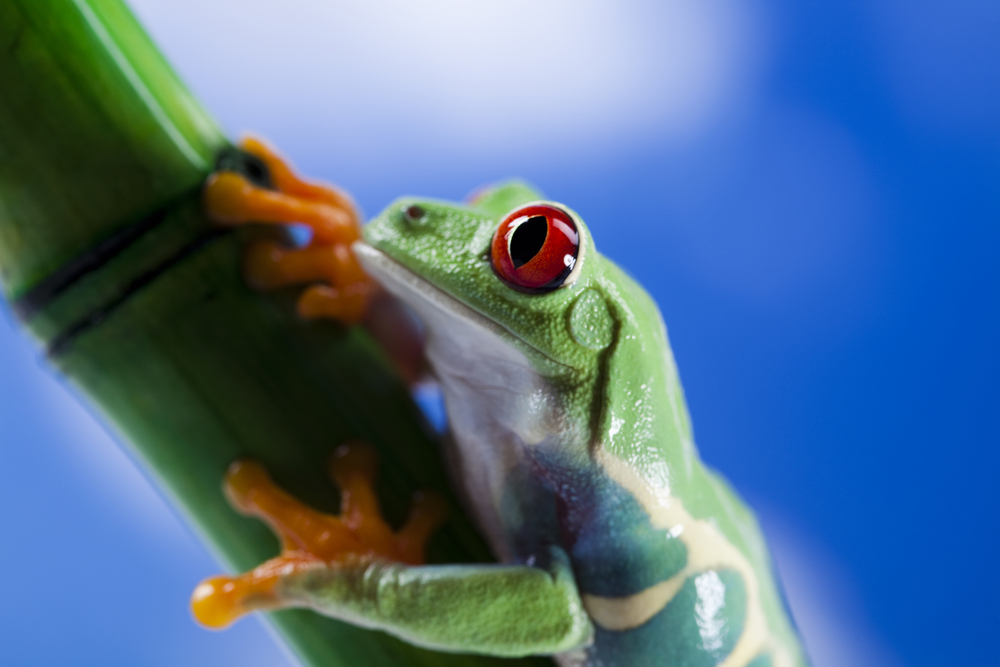
If habitat destruction and illegal collection for the pet trade continue, then this species can easily become extinct in the wild.
For this reason, the Rainforest Alliance uses these frogs as an ambassador species. The Rainforest Alliance fights to keep the rainforest alive and avoid deforestation.
Can Red-Eyed Tree Frogs Live Together?
Yes, red-eyed tree frogs can live together. However, you’d need to add ten gallons of space for every additional frog you keep.
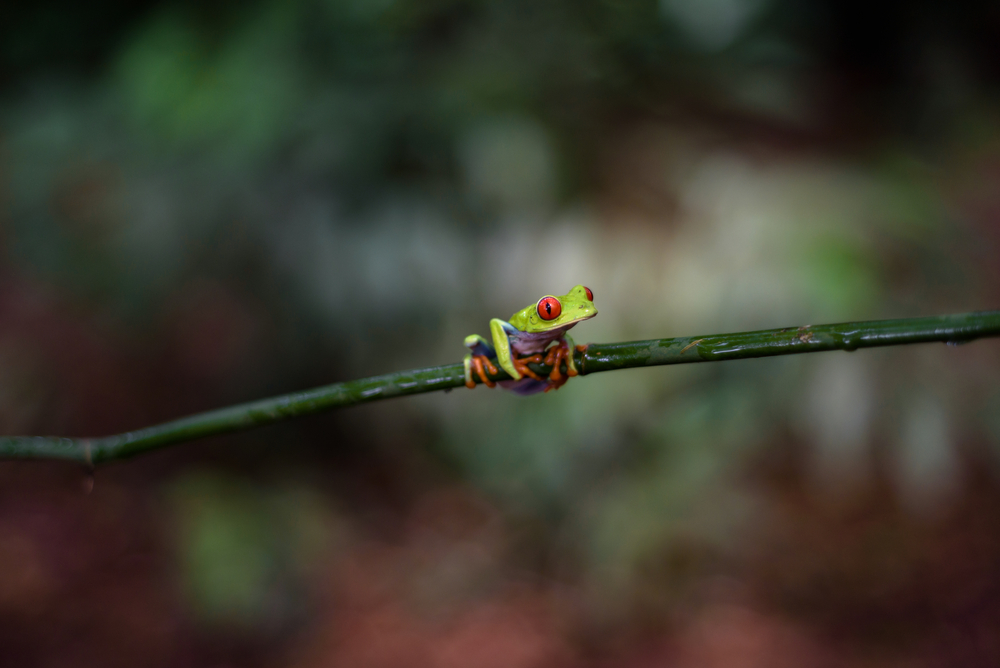
Can Red-Eyed Tree Frogs Swim?
Yes, red-eyed tree frogs can swim. However, they’re not strong swimmers like the more aquatic species.
Can Red-Eyed Tree Frogs Live With Other Animals?
Red-eyed tree frogs do best when kept in their own enclosure, for the most part. But, they’ll get along with some other arboreal species like the gray tree frog or white-lipped tree frog.
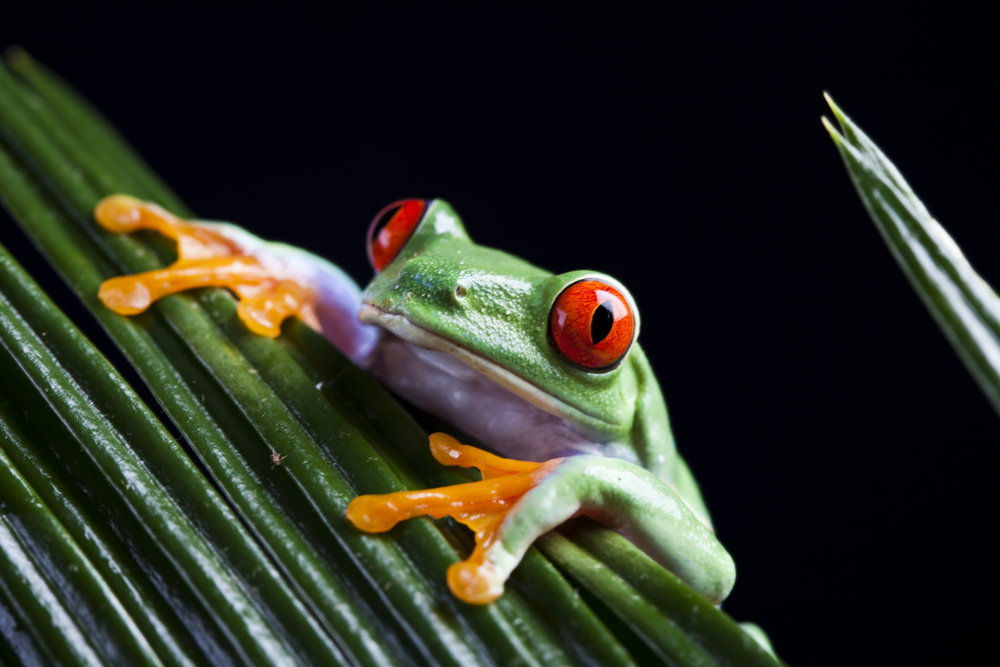
How Have Red-Eyed Tree Frogs Adapted To The Rainforest?
These frogs are well adapted to life in the forest. Their bright green coloration helps them blend into the vegetation, and the sticky pads on their feet help them climb.
Perhaps the most impressive adaptation is how they breed. The female lays her eggs on a broad leaf above the water, with the male fertilizing them as they’re laid.
The eggs develop into tadpoles within six to seven days. Typically, the tadpoles all emerge within a minute of one another, causing the entire clutch of jelly-filled eggs to rupture.
The rupture causes a rush of fluid which makes the tadpoles fall into the water. If any eggs hatch early, the tadpoles may not make it to the water.
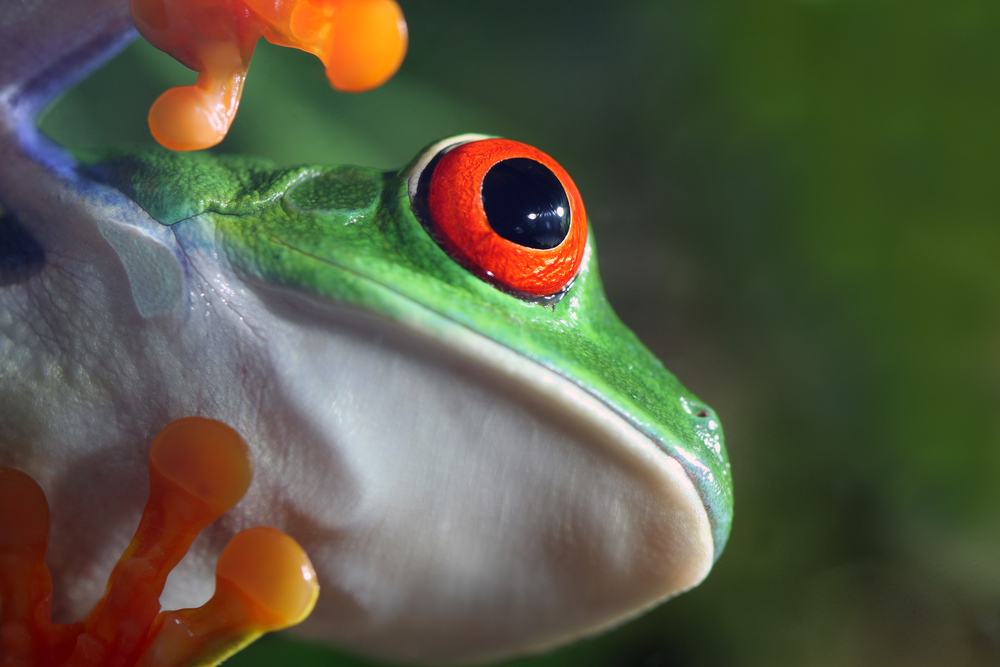
Related Species and Articles to Red-Eyed Tree Frog
If you’re interested in other frogs, have a look at:
- Gray Tree Frog Facts & Care Sheet
- Asian Painted Frog (Chubby Frog) Care Sheet
- White’s Tree Frog Habitat Setup Guide
You can also check out our other articles on amphibians – we have vital guides that you can learn from!
